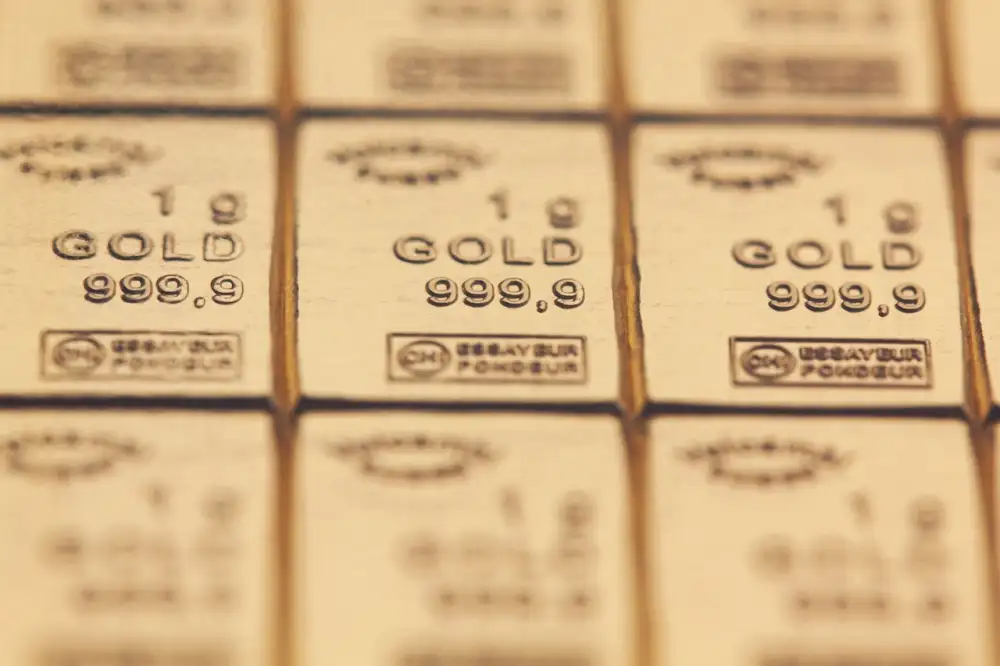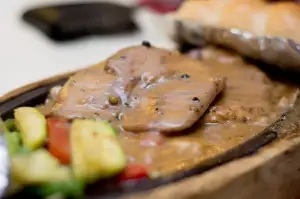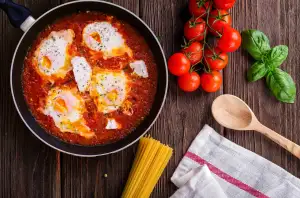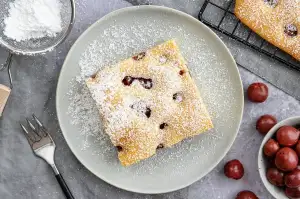Unlock the Secrets of Measurement Conversions: How Many Grams in a Cup?

Cooking is both an art and a science, and accurate measurements play a crucial role in creating delicious and successful dishes. Whether you're a seasoned chef or a beginner in the kitchen, understanding measurement conversions is essential for achieving consistent results. From cups to grams, mastering these conversions unlocks the secrets to culinary success. In this article, we will delve into the importance of accurate measurements in recipes and explore the conversion of cups to grams for different ingredients. So let's dive in and unlock the secrets of measurement conversions, starting with the basics!
The Importance of Accurate Measurements in Recipes
Accurate measurements are crucial in cooking as they ensure consistent and reliable results. Whether you're a seasoned chef or a novice cook, precise measurements can make or break a recipe. Using too much or too little of an ingredient can alter the taste, texture, and overall outcome of your dish. It's like following a road map - if you take the wrong turn or miss a step, you may end up at a completely different destination. So, to achieve culinary success, it's essential to pay attention to measurement conversions and follow them diligently.
Exploring the Conversion of Cups to Grams
When it comes to cooking, accurate measurements are crucial for achieving the desired results. One common measurement conversion that often confuses home cooks is converting cups to grams. Understanding this conversion can greatly enhance your culinary skills and ensure consistent outcomes.
To convert cups to grams, you need to know the density of the ingredient you are working with. Different ingredients have different densities, which means that one cup of one ingredient may not weigh the same as one cup of another ingredient.
For example, one cup of all-purpose flour weighs approximately 120 grams, while one cup of granulated sugar weighs around 200 grams. This difference in weight is due to the varying densities between these two ingredients.
To accurately convert cups to grams, it is essential to consult a reliable conversion chart or use a digital kitchen scale. These tools will provide precise measurements based on the specific ingredient you are using.
Keep in mind that some recipes may provide both volume (cups) and weight (grams) measurements for certain ingredients. In such cases, it's best to follow the weight measurements for more accurate results.
By understanding the conversion of cups to grams, you can ensure consistency in your recipes and achieve culinary success every time you step into the kitchen. So next time you come across a recipe with unfamiliar measurements, don't fret - unlock the secrets of measurement conversions and elevate your cooking skills!
Understanding the Standard Cup Measurement
In the world of cooking, the standard cup measurement is a widely used unit for measuring ingredients. A standard cup holds approximately 240 milliliters or 8 fluid ounces. It is important to note that this measurement refers to a level cup, not packed or heaped.
The standard cup measurement provides a consistent reference point for recipes, allowing cooks to follow instructions accurately. This uniformity ensures that the ratios of ingredients remain consistent across different recipes and helps achieve desired flavors and textures in dishes.
When using the standard cup measurement, it is crucial to use proper measuring techniques. To measure dry ingredients like flour or sugar, spoon them into the measuring cup until it overflows slightly. Then level off the excess with a straight-edged utensil. For liquid ingredients, pour them into a clear measuring cup and check at eye level for accuracy.
By understanding the standard cup measurement and employing correct measuring techniques, you can ensure precise measurements in your cooking endeavors. This knowledge will serve as a foundation for accurate conversions from cups to grams for various ingredients, which we will explore further in the following sections.
Converting Cups to Grams for Different Ingredients
When it comes to cooking, precise measurements are crucial for achieving the perfect balance of flavors and textures. Converting cups to grams is a fundamental skill that every aspiring chef should master. Different ingredients have different densities, so their conversion factors may vary. For example, 1 cup of all-purpose flour weighs around 120 grams, while 1 cup of granulated sugar weighs approximately 200 grams. It's essential to consult a reliable conversion chart or use a digital scale for accurate results. By understanding the specific conversions for various ingredients, you can ensure consistency and elevate your culinary creations to new heights.
Common Conversion Factors for Popular Ingredients
When it comes to cooking, accurate measurement conversions are essential for achieving the desired taste and texture in your dishes. Understanding the conversion of cups to grams is particularly important as it allows you to accurately measure ingredients and follow recipes from around the world.
Here are some common conversion factors for popular ingredients:
1. Flour: 1 cup of all-purpose flour is approximately equal to 125 grams. However, this can vary depending on the brand and how tightly packed the flour is in the cup. It's always best to weigh your flour for precise measurements.
2. Sugar: Granulated white sugar weighs about 200 grams per cup. Brown sugar, on the other hand, is slightly denser and weighs around 220 grams per cup.
3. Butter: One cup of butter is equivalent to approximately 227 grams or 8 ounces. This conversion factor remains consistent regardless of whether you're using salted or unsalted butter.
4. Milk: A cup of milk typically weighs around 240 grams. However, keep in mind that different types of milk such as whole milk, skim milk, or almond milk may have slight variations in weight.
5. Oats: Rolled oats weigh about 90 grams per cup, while quick oats weigh approximately 100 grams per cup.
6. Honey: The weight of honey can vary based on its viscosity and temperature, but on average, one cup of honey weighs around 340 grams.
These conversion factors should serve as a helpful guide when converting cups to grams for popular ingredients in your recipes. However, it's important to note that these values are approximate and can vary depending on various factors such as humidity levels and ingredient density.
To ensure accuracy in your measurements, it's always recommended to use a kitchen scale for weighing ingredients whenever possible. This will guarantee precise results and help you achieve consistent flavors in your cooking.
By mastering measurement conversions for popular ingredients like flour, sugar, butter, milk, oats, and honey, you'll be able to confidently experiment with recipes from different cuisines and elevate your culinary skills to new heights.
Tips for Accurate Measurement Conversions in the Kitchen
1. Use a kitchen scale: Invest in a good quality kitchen scale to ensure precise measurements. This will eliminate any guesswork and provide accurate conversions.
2. Follow the recipe: Always refer to the recipe for specific conversion instructions. Some recipes may provide measurements in both cups and grams, while others may require you to convert on your own.
3. Be consistent: Stick to one measurement system throughout your cooking process. If a recipe calls for grams, convert all other measurements accordingly to maintain consistency.
4. Understand density: Different ingredients have different densities, which can affect their conversion from cups to grams. Familiarize yourself with the density of commonly used ingredients to make accurate conversions.
5. Use conversion charts: Keep handy conversion charts that list common ingredients and their corresponding cup-to-gram conversions. These charts can save time and ensure accuracy when converting measurements.
6. Practice with precision: When measuring ingredients, be meticulous in your approach. Level off dry ingredients with a straight edge, pour liquids at eye level, and use measuring spoons for smaller quantities.
7. Adjust as needed: Remember that conversions are not always exact due to variations in ingredient quality and packing methods. Adjust your measurements based on personal preference or desired outcome.
By following these tips, you can unlock the secrets of measurement conversions and confidently create delicious dishes with precise measurements every time!
In the world of cooking, accurate measurement conversions are essential for achieving culinary success. Whether you're a seasoned chef or a beginner in the kitchen, understanding how to convert cups to grams is a skill that will elevate your cooking to new heights.
By unlocking the secrets of measurement conversions, you open up a world of possibilities in your recipes. No longer will you have to rely on guesswork or imprecise measurements. Instead, you can confidently follow any recipe, knowing that your ingredients are measured accurately.
Remember, the standard cup measurement is crucial when converting cups to grams. Understanding this baseline allows you to convert different ingredients with ease. By familiarizing yourself with common conversion factors for popular ingredients, such as flour, sugar, and butter, you can ensure consistent results in your dishes.
To achieve accurate measurement conversions in the kitchen, it's important to use the right tools and techniques. Invest in a reliable digital scale for precise measurements and always level off dry ingredients when measuring them in cups. Additionally, be mindful of ingredient density and adjust accordingly.
Mastering measurement conversions not only improves the accuracy of your recipes but also enhances the overall taste and texture of your dishes. It allows you to experiment with new flavors and confidently adapt recipes to suit your preferences.
So take the time to unlock the secrets of measurement conversions and discover how many grams are in a cup. With this knowledge at your fingertips, you'll be well on your way to elevating your taste buds and experiencing the joy of cooking with food like never before.
Published: 19. 11. 2023
Category: Food



